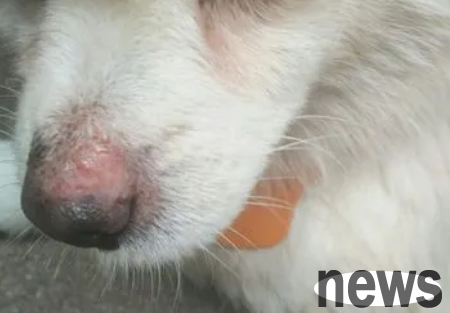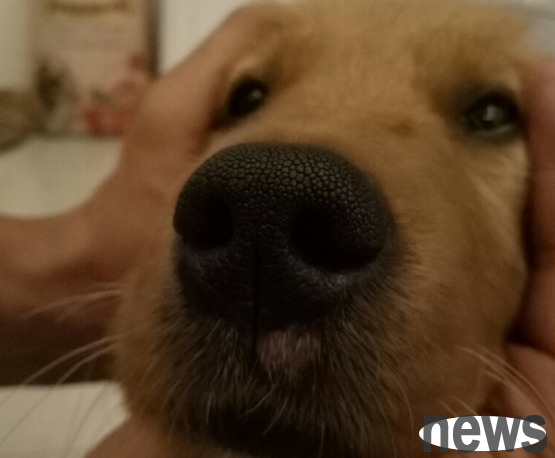Dogs are very skinny microorganisms, and they are well known. According to this kind of idea, people will feel that dogs are very prone to injury when raising pets. Such injuries are quite serious, such as injuries. It is also a minor injury, such as a scratch or a bleeding part. When dealing with a serious injury, every shoveler will solve it carefully, but when encountering a minor injury, it may not be easy to take it seriously. There is no right approach to

, but the shoveler had to consider a risk. This type of risk means that the dog suffers from a "big injury", but the main external manifestation of this type of disease is the level of "small injury". If the shoveler still solves the dog's disease in the previous way, problems will arise.
Perhaps many people will ask, is this true? Do you want to say that many people have indeed happened to that. On this day, a shoveler took the dog to see the doctor. His expression was very relaxed. She said that bright red liquid appeared in the dog's nose. Maybe the dog was bleeding after catching it while playing outside, and wanted to ask the doctor to help the dog solve it.
And the pet doctor's expression was inverted to the relaxed expression of the poop shoveler, and the pet doctor's expression was very serious. He told the shoveler that the liquid flowing out of the dog's nose was not nosebleed, and suggested that the shoveler do some basic tests to make it clear the real cause of the disease.
In response to the pet doctor's concern, the shoveler did not care and rejected the proposal for subsequent inspection. Two months later, the doctor will see the dog shoveler visiting the doctor with a dog in a panic look on his face. This time the dog's breathing was rapid and the sound was turbid, and it had been a long time since. The doctor made a series of tests on dogs and finally wrote about the difference in the medical history: cellulosic pneumonia.
is a real example. In fact, before I saw this example, I never thought that the bright red liquid discharged from the dog's nose will have a certain relationship with lung infection. Therefore, in order to find out the truth of the matter, I looked at a lot of materials and had an unquestionable reference answer. All data show that the doctor finally made the difference, and the culprit behind all the dog's diseases is a disease called cellulose pneumonia.
The evil disease of wearing a nosebleed coat.
1. Definition of canine cellulosic pneumonia.
Canine cellulose pneumonia, also known as canine lobe pneumonia, is a subacute pulmonary infection characterized by the bronchitis of dogs and the bronchial filled with a lot of cellulose protein exudate. It is a subacute or acute disease with a very fast onset rate and a very high mortality rate.
2. Symptoms of canine cellulose pneumonia.
When a dog suffers from cellulosic pneumonia, the disease first originates from some bronchials and then spreads rapidly to all lungs. Since the key to clinical medical characteristics is the heat type, rusty nasal fluid will appear in the dog's nostrils. Since this rusty nasal fluid is bright red, it will be confused with nose bleeding in the eyes of the shoveler.
In addition to the release of rusty nasal fluid when opening the nostrils, dogs will also experience symptoms such as poor appetite, listlessness, and dry cough after they have cellulose pneumonia. If the shoveler observes, they can find that they will spit out a lot of sticky phlegm, and they can also find that their body temperature is high and that turbid sounds are heard when they inhale.

3. How can there be cellulosic pneumonia in dogs?
According to current scientific research on diagnosis and treatment, the causes of canine cellulose pneumonia have not yet been established. The most popular insight at this stage is that cellulose pneumonia is caused by the damage of the dog's bronchial tract, causing the protein slurry in the capillary to penetrate into the bronchial lumen, and the water is dried and digested and absorbed during the entire process of ventilation. The cellulose protein adheres to and accumulates in the bronchial lumen to produce cellulose balls, which ultimately leads to the production of cellulose pneumonia in canine.
The most likely cause of bronchial capillary damage is vasculitis and bronchial bleeding. Some scientists believe that cellulose pneumonia will be an end-stage pathological change in subacute lung injury. The detailed process of subacute lung injury and disease will be: the initial stage of lung injury becomes traditional focal bronchial damage, and then there will be pathological changes in the spread or mixed with cellulose spheres to produce organized pneumonia, and finally until many cellulose spheres are produced, and the trend will eventually be cellulose pneumonia.
IV. Injury of canine cellulosic pneumonia. 1. The association between cellulose pneumonia and immunity-related diseases.
According to current scientific research, there are many diseases related to canine cellulose pneumonia, such as connective tissue diseases, such as collagen cardiovascular and cerebrovascular diseases, targeted lupus erythematosus, unclassified connective tissue diseases, seasonal allergic lung infections, and plant fibromyllopathy.
2. The association between cellulose pneumonia and infectious diseases.
Cellulose pneumonia can be accompanied by a variety of pathogenic infections, including bacterial infections, viral infections, bacterial infections, and mycoplasma pneumonia.
3. The association between cellulose pneumonia and renal failure.
Cellulosic pneumonia and renal failure seem to be a causal relationship. According to the current references, there are cases of cellulose pneumonia caused by renal failure of dogs, and it is also cases of lung failure caused by cellulose pneumonia caused by lung failure of dogs.
In addition, cellulosic pneumonia and renal failure are related to interaction forces. No matter which disease arises, the shoveler cannot be lucky.
4. The association between cellulose pneumonia and thrombosis.
According to 17 scientific research on cellulose pneumonia reported by Beasley et al., one of them has a significant thrombosis in the capillary pulmonary mechanism..
When a thrombosis occurs, inflammatory factors such as TNF-α and IL-1β will harm all normal lung institutions around it. In addition, thrombin that causes thrombosis can promote hematocrit reactions and bronchospasm, and can also cause a series of lung mechanism damage and other inflammation.
V. Treatment of canine cellulose pneumonia.
In the past, when I was in the science and technology, I would divide the treatment into what the shit can do and what the doctor should do. Little do I know that about canine cellulose pneumonia, but I can't say that.
This is because canine cellulosic pneumonia is a very unique disease, and in clinical practice it is not an immediate disease due to a certain element. The production of canine cellulose pneumonia is usually accompanied by other diseases, and its causes will also be other diseases.
Therefore, there is basically no way to treat canine cellulose pneumonia as a cross-professional shoveler. Therefore, once you find that the dog has all symptoms of suspected cellulosic pneumonia, the shoveler must take the dog to the hospital. Don't be blinded by the dog's "small injury" like the dog in any example.
There are many shovelers who bring their daily work experience to the entire process of feeding dogs, but shovelers who have to figure out that it is not easy for dogs to speak, and they do not have a way to complain about what is happening to them. At that time, the carefulness of the shoveler can have a great effect. Finally, I still want to say the words from the beginning to the end:
"The dog's injury is quite a big injury and a small injury, but when the dog shoveler solves the problems of dog injury and disease, don't be blinded by the phenomenon of minor injuries."
